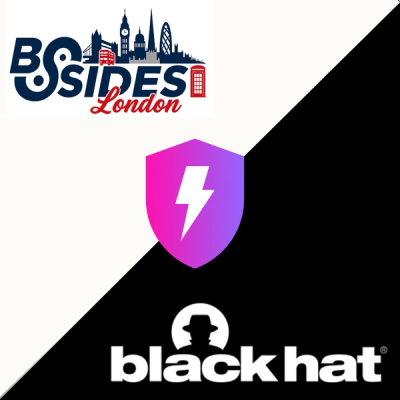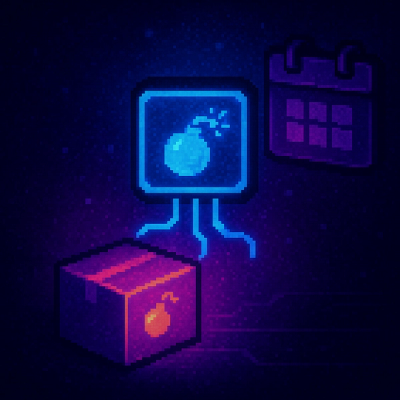
Security News
Meet Socket at Black Hat Europe and BSides London 2025
Socket is heading to London! Stop by our booth or schedule a meeting to see what we've been working on.
@yolkai/react-froala-wysiwyg
Advanced tools
React component for Froala WYSIWYG HTML rich text editor.
react-froala-wyswiyg provides React bindings to the Froala WYSIWYG editor VERSION 3.
This is a fork of froala/react-froala-wysiwyg which is kept up-to-date with fixes needed by Yolk.
This project uses semantic-release. Follow the Angular commit conventions, and a release will be automatically published after merging code into master.
To integrate the latest upstream changes from froala/react-froala-wysiwyg:
$ git remote add upstream https://github.com/froala/react-froala-wysiwyg.git
$ git checkout master
$ git checkout -b upstream-update
$ git pull upstream master
$ # fix conflicts
$ git commit
$ # prefix the merge commit message with "feat(*): "
$ git push -u origin HEAD
Then make a pull request from upstream-update to master.
npm install @yolkai/react-froala-wysiwyg --save
import React from "react";
import ReactDOM from "react-dom";
// Require Editor CSS files.
import "froala-editor/css/froala_style.min.css";
import "froala-editor/css/froala_editor.pkgd.min.css";
import FroalaEditor from "@yolkai/react-froala-wysiwyg";
// Import all Froala Editor plugins;
// import 'froala-editor/js/plugins.pkgd.min.js';
// Import a single Froala Editor plugin.
// import 'froala-editor/js/plugins/align.min.js';
// Import a language file.
// import 'froala-editor/js/languages/de.js';
// Import a third-party plugin.
// import 'froala-editor/js/third_party/image_tui.min.js';
// import 'froala-editor/js/third_party/embedly.min.js';
// import 'froala-editor/js/third_party/spell_checker.min.js';
// Include font-awesome css if required.
// install using "npm install font-awesome --save"
// import 'font-awesome/css/font-awesome.css';
// import 'froala-editor/js/third_party/font_awesome.min.js';
// Include special components if required.
// import FroalaEditorView from '@yolkai/react-froala-wysiwyg/FroalaEditorView';
// import FroalaEditorA from '@yolkai/react-froala-wysiwyg/FroalaEditorA';
// import FroalaEditorButton from '@yolkai/react-froala-wysiwyg/FroalaEditorButton';
// import FroalaEditorImg from '@yolkai/react-froala-wysiwyg/FroalaEditorImg';
// import FroalaEditorInput from '@yolkai/react-froala-wysiwyg/FroalaEditorInput';
// Render Froala Editor component.
ReactDOM.render(
<FroalaEditor tag="textarea" />,
document.getElementById("editor")
);
<div id="editor">
</div>
var webpack = require("webpack");
module.exports = {
module: {
loaders: [
{
test: /\.jsx$/,
loader: 'babel',
query: {
cacheDirectory: true,
presets: ['react','es2015', 'stage-2']
}
}, {
test: /\.css$/,
loader: "style-loader!css-loader?root=."
},
{
test: /\.woff(\?v=\d+\.\d+\.\d+)?$/,
loader: "url?limit=10000&mimetype=application/font-woff"
}, {
test: /\.woff2(\?v=\d+\.\d+\.\d+)?$/,
loader: "url?limit=10000&mimetype=application/font-woff"
}, {
test: /\.ttf(\?v=\d+\.\d+\.\d+)?$/,
loader: "url?limit=10000&mimetype=application/octet-stream"
}, {
test: /\.eot(\?v=\d+\.\d+\.\d+)?$/,
loader: "file"
}, {
test: /\.svg(\?v=\d+\.\d+\.\d+)?$/,
loader: "url?limit=10000&mimetype=image/svg+xml"
}
]
},
resolve: {
modulesDirectories: ['node_modules']
}
};
var webpack = require("webpack");
module.exports = {
module: {
rules: [
{
test: /\.jsx$/,
use: {
loader: 'babel-loader',
options: {
cacheDirectory: true,
presets: ['react','es2015', 'stage-2']
}
}
}, {
test: /\.css$/,
use: [
'style-loader',
'css-loader'
]
},
{
test: /\.woff(\?v=\d+\.\d+\.\d+)?$/,
use: "url-loader?limit=10000&mimetype=application/font-woff"
}, {
test: /\.woff2(\?v=\d+\.\d+\.\d+)?$/,
use: "url-loader?limit=10000&mimetype=application/font-woff"
}, {
test: /\.ttf(\?v=\d+\.\d+\.\d+)?$/,
use: "url-loader?limit=10000&mimetype=application/octet-stream"
}, {
test: /\.eot(\?v=\d+\.\d+\.\d+)?$/,
use: "file-loader"
}, {
test: /\.svg(\?v=\d+\.\d+\.\d+)?$/,
use: "url-loader?limit=10000&mimetype=image/svg+xml"
}
]
},
resolve: {
modules: ['node_modules']
}
};
<FroalaEditor
tag="textarea"
config={this.config}
model={this.state.model}
onModelChange={this.handleModelChange}
/>
tag attr is used to tell on which tag the editor is initialized.
There are special tags: a, button, img, input. Do not use them in FroalaEditor component. To initialize the editor on a special tag, use FroalaEditorA, FroalaEditorButton, FroalaEditorImg and FroalaEditorInput components.
You can pass editor options as component attribute (optional).
config={this.config}
You can pass any existing Froala option. Consult the Froala documentation to view the list of all the available options:
config={{
placeholderText: 'Edit Your Content Here!',
charCounterCount: false
}}
Aditional option is used:
Events can be passed in with the options, with a key events and object where the key is the event name and the value is the callback function.
config={{
placeholder: "Edit Me",
events : {
'focus' : function(e, editor) {
console.log(editor.selection.get());
}
}
}}
Using the editor instance from the arguments of the callback you can call editor methods as described in the method docs.
Froala events are described in the events docs.
You can pass the custom buttons to the editor by following way:
import FroalaEditor from "froala-editor";
FroalaEditor.DefineIcon("alert", { NAME: "info", SVG_KEY: "help" });
FroalaEditor.RegisterCommand("alert", {
title: "Hello",
focus: false,
undo: false,
refreshAfterCallback: false,
callback: function() {
alert("Hello!");
}
});
FroalaEditor.DefineIcon("clear", { NAME: "remove", SVG_KEY: "remove" });
FroalaEditor.RegisterCommand("clear", {
title: "Clear HTML",
focus: false,
undo: true,
refreshAfterCallback: true,
callback: function() {
this.html.set("");
this.events.focus();
}
});
FroalaEditor.DefineIcon("insert", { NAME: "plus", SVG_KEY: "add" });
FroalaEditor.RegisterCommand("insert", {
title: "Insert HTML",
focus: true,
undo: true,
refreshAfterCallback: true,
callback: function() {
this.html.insert("My New HTML");
}
});
Now you can use these buttons in options:
toolbarButtons: [['undo', 'redo' , 'bold'], ['alert', 'clear', 'insert']],
The WYSIWYG HTML editor content model.
model = {this.state.model}
Two way binding:
import React from 'react';
class EditorComponent extends React.Component {
constructor () {
super();
this.handleModelChange = this.handleModelChange.bind(this);
this.state = {
model: 'Example text'
};
}
handleModelChange: function(model) {
this.setState({
model: model
});
}
render () {
return <FroalaEditor
model={this.state.model}
onModelChange={this.handleModelChange}
/>
}
}
To achieve one way binding and pass only the initial editor content, simply do not pass onModelChange attribute.
Use the content in other places:
<input value={this.state.model} />
You can also use the editor on img, button, input and a tags:
<FroalaEditorImg
config={this.config}
/>
<FroalaEditorButton
config={this.config}
/>
<FroalaEditorInput
config={this.config}
/>
<FroalaEditorA
config={this.config}
/>
The model must be an object containing the attributes for your special tags. Example:
constructor () {
super();
this.handleModelChange = this.handleModelChange.bind(this);
this.state = {
model: {src: 'path/to/image.jpg'}
};
}
this.state = {
model: { innerHTML: "Click Me" }
};
As the button text is modified by the editor, the innerHTML attribute from buttonModel model will be modified too.
config: {
reactIgnoreAttrs: ['class', 'id']
},
Gets the functionality to operate on the editor: create, destroy and get editor instance. Use it if you want to manually initialize the editor.
onManualControllerReady={this.handleManualController}
handleManualController: function(initControls) {
//...
}
The object received by the function will contain the following methods:
To display content created with the froala editor use the FroalaEditorView component.
<FroalaEditor
model={this.state.content}
onModelChange={this.handleModelChange}
/>
<FroalaEditorView
model={this.state.content}
/>
The react-froala-wyswiyg project is under MIT license. However, in order to use Froala WYSIWYG HTML Editor plugin you should purchase a license for it.
Froala Editor has 3 different licenses for commercial use. For details please see License Agreement.
If you want to contribute to react-froala-wyswiyg, you will first need to install the required tools to get the project going.
$ npm install
$ npm run build
$ npm run demo
FAQs
React component for Froala WYSIWYG HTML rich text editor.
The npm package @yolkai/react-froala-wysiwyg receives a total of 16 weekly downloads. As such, @yolkai/react-froala-wysiwyg popularity was classified as not popular.
We found that @yolkai/react-froala-wysiwyg demonstrated a not healthy version release cadence and project activity because the last version was released a year ago. It has 1 open source maintainer collaborating on the project.
Did you know?

Socket for GitHub automatically highlights issues in each pull request and monitors the health of all your open source dependencies. Discover the contents of your packages and block harmful activity before you install or update your dependencies.

Security News
Socket is heading to London! Stop by our booth or schedule a meeting to see what we've been working on.

Security News
OWASP’s 2025 Top 10 introduces Software Supply Chain Failures as a new category, reflecting rising concern over dependency and build system risks.

Research
/Security News
Socket researchers discovered nine malicious NuGet packages that use time-delayed payloads to crash applications and corrupt industrial control systems.